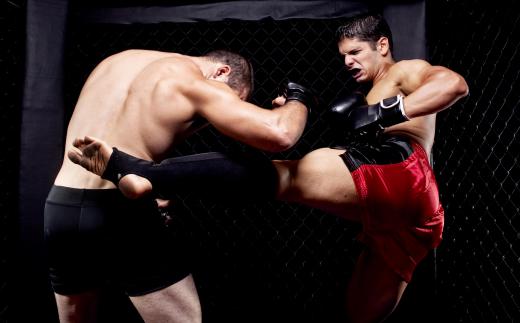Kung fu is one of a number of Chinese martial arts designed to refine the body and the mind. It is perhaps one of the most widely known martial arts, because many films incorporate its techniques. There are hundreds of styles taught all over the world, although they can be loosely divided into two camps: Shaolin style kung fu, and other techniques, some of which have a history that outdates the Shaolin order.
There are a number of different ways to spell kung fu, including gung fu and gong fu. This spelling variation is due to the difficulty of transliterating from Chinese to other languages. During the 19th and early 20th centuries, Chinese was transliterated using the Wade-Giles system, which transposed the Chinese “g” sound with a “k.” Parts of China and Taiwan still use the Wade-Giles system, but most of China has begun to use pinyin, which has replaced the “k” of the Wade-Giles system with a “g.” Bruce Lee and other famous martial artists from China also use the “g” when talking about this martial art form.

Shaolin gung fu has its origins in the fifth century. Like some other martial arts, it began in religious temples, where the monks sought a mind and body discipline. In addition to the fighting style, it also includes mental exercises and religious practices designed to balance the whole body. Kung fu is fundamentally about aligning the practitioner with chi, the life force that is believed to move around all people.

Shaolin temples resembled universities, integrating a wide range of subjects of study. Therefore, traditional Shaolin styles such as Wing Chun, Crane, Praying Mantis, and Hung Gar incorporate knowledge from fields outside martial arts, such as the healing arts and meditation. Advocates for Shaolin styles believe that they are more rounded martial arts styles, and that practitioners will benefit from them on a whole body level.
Other fighting styles, some of which predate the Shaolin style, are also lumped under the kung fu umbrella. They include Pa-Kua, Eagle Claw, and Eight Drunken Immortals styles. These disciplines are not considered to be Shaolin style because they did not originate in temples and are focused primarily on fighting techniques.
Whether Shaolin or otherwise, kung fu is characterized by self defense tactics that turn the energy of an attacker against him or her. Although the techniques may vary, individual styles teach grapples, throws, kicks, punches, and the use of weapons such as staffs. In addition to the physical discipline, most place an emphasis on respect, honor, and living a balanced life.
